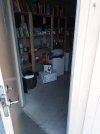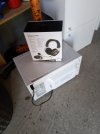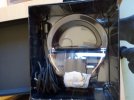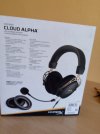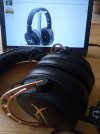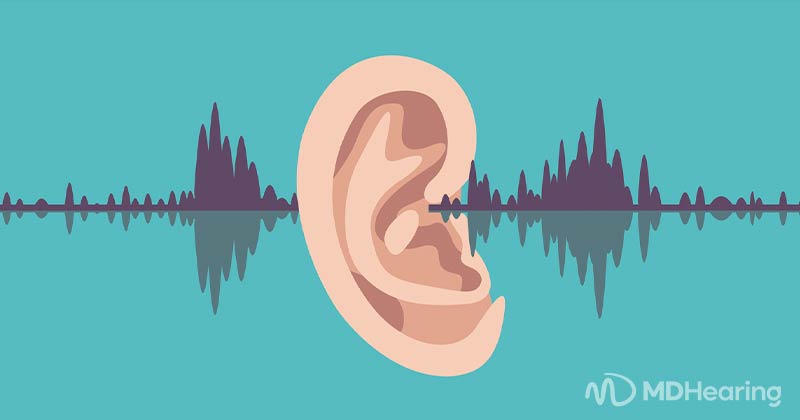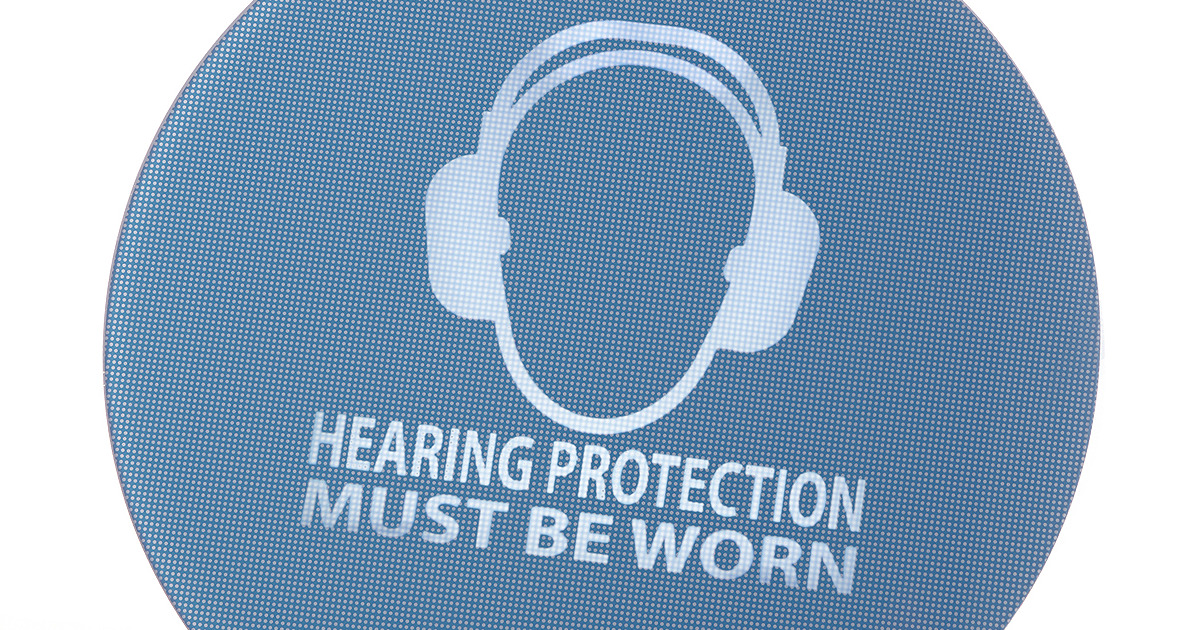This is a review, listening tests, EQ and detailed measurements of the HyperX Cloud Orbit S Gaming, noise cancelling Headset. It is on kind loan from a member and costs US $185.

The feel is good for the price. As you can almost read, the driver is supplied by Audeze. The headset has both digital and analog inputs. Digital worked (as a DAC in the OS) but I could not get my measurements to sync with it due to latency it introduces. So testing was done using analog, 3.5mm input. All effects were turned off for testing.
The cups are barely large enough for my ears and after 15 minutes of listening, the top of my ear felt pinched. The headband also goes stiff quick so it is not going to fit everyone well.
Fitment on my GRAS 45CA fixture was a bit tricky. What you are about to see is the best I could get.
HyperX Cloud Orbit S Gaming Headset Measurements
Let's start with our usual frequency response measurement:

Compliance with the target is good. There is an extra boost in upper bass which given the target customer, is probably OK. There is some shortfall around 6 kHz so the sound is going to be a bit dull. Deviation from target makes exact EQ development hard:

I was pleasantly surprised at the low distortion at 94 and 104 dBSPL:

It, like many active headphones, clips the front-end and distortion goes through the roof at 114 dBSPL. Fortunately we already have plenty of bass so what you see is what we are going to get.
Absolute distortion shows third harmonic dominant at higher frequencies:

Group delay is uneventful other than showing nearly 27 milliseconds of delay:

HyperX Cloud Orbit S Gaming Headset Listening Tests
Out of box experience was pleasant as the measurements would predict. Let's eq and see if we can improve:

I first took out the upper bass energy and the result was less pleasant. So I dialed in the sub-bass and that helped get some of the warmth back in. The measurements are ambiguous for the 6.5 kHz due to channel differential so I fine tuned that by ear. With just these three filters, the sound became quite nice, rendering my reference tracks in surprising fidelity. Even my sub-bass heavy (shown in the display above) was reproduced with impressive bass response. This was at medium to medium loud. Go a bit higher and you start to hear clicking with progressively more distortion.
Conclusions
I went in with low expectations but left with good impression of the Cloud Orbit S. If you can't eq, which likely many source's can't in gaming situation, you still have good response with plenty of bass. If you can EQ, you wind up with a nice hi-fi experience that you don't have to apologize for.
I am going to recommend the HyperX Cloud Orbit S Gaming Headset.
------------
As always, questions, comments, recommendations, etc. are welcome.
Any donations are much appreciated using: https://www.audiosciencereview.com/forum/index.php?threads/how-to-support-audio-science-review.8150/
The feel is good for the price. As you can almost read, the driver is supplied by Audeze. The headset has both digital and analog inputs. Digital worked (as a DAC in the OS) but I could not get my measurements to sync with it due to latency it introduces. So testing was done using analog, 3.5mm input. All effects were turned off for testing.
The cups are barely large enough for my ears and after 15 minutes of listening, the top of my ear felt pinched. The headband also goes stiff quick so it is not going to fit everyone well.
Fitment on my GRAS 45CA fixture was a bit tricky. What you are about to see is the best I could get.
HyperX Cloud Orbit S Gaming Headset Measurements
Let's start with our usual frequency response measurement:
Compliance with the target is good. There is an extra boost in upper bass which given the target customer, is probably OK. There is some shortfall around 6 kHz so the sound is going to be a bit dull. Deviation from target makes exact EQ development hard:
I was pleasantly surprised at the low distortion at 94 and 104 dBSPL:
It, like many active headphones, clips the front-end and distortion goes through the roof at 114 dBSPL. Fortunately we already have plenty of bass so what you see is what we are going to get.
Absolute distortion shows third harmonic dominant at higher frequencies:
Group delay is uneventful other than showing nearly 27 milliseconds of delay:
HyperX Cloud Orbit S Gaming Headset Listening Tests
Out of box experience was pleasant as the measurements would predict. Let's eq and see if we can improve:
I first took out the upper bass energy and the result was less pleasant. So I dialed in the sub-bass and that helped get some of the warmth back in. The measurements are ambiguous for the 6.5 kHz due to channel differential so I fine tuned that by ear. With just these three filters, the sound became quite nice, rendering my reference tracks in surprising fidelity. Even my sub-bass heavy (shown in the display above) was reproduced with impressive bass response. This was at medium to medium loud. Go a bit higher and you start to hear clicking with progressively more distortion.
Conclusions
I went in with low expectations but left with good impression of the Cloud Orbit S. If you can't eq, which likely many source's can't in gaming situation, you still have good response with plenty of bass. If you can EQ, you wind up with a nice hi-fi experience that you don't have to apologize for.
I am going to recommend the HyperX Cloud Orbit S Gaming Headset.
------------
As always, questions, comments, recommendations, etc. are welcome.
Any donations are much appreciated using: https://www.audiosciencereview.com/forum/index.php?threads/how-to-support-audio-science-review.8150/
